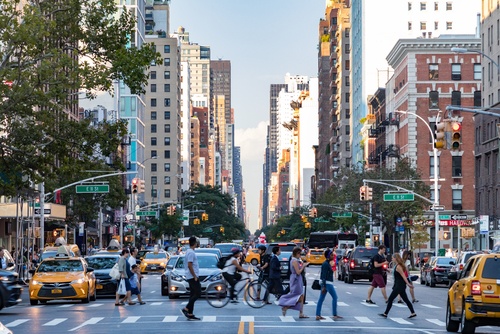
A new study suggests that physical activity and exercise capacity of people with chronic obstructive pulmonary disease (COPD) disease may be linked with population density, pedestrian street length, slope of terrain and exposure to nitrogen dioxide (NO2). The findings, published in Environmental Research, found that higher population density is linked with less walking, more sedentary time, and less exercise capacity.
In this study, researchers sought to discern the link between urban environmental factors and severe COPD based on the following variables: objective physical activity (daily step count and sedentary time), physical activity experience (perceived difficulty during activity) and functional exercise capacity (distance covered during six minutes of walking). The study consisted of 404 COPD patients with mild to severe COPD (85% male, average age, 69). On average, the population of interest walked 7,524 steps per day.
“A first striking result is that greater population density was associated with worse physical activity and capacity outcomes in COPD patients,” commented Maria Koreny, postdoc external staff and lead author of the study via a press release about the study. “It was thought that density could have a stimulating effect because it is associated with more shops and services, as well as better public transport, but when density is very high—as in Barcelona, where 46% of patients were recruited—it could have negative effects because of the increased dangers of traffic, fumes and noise.” Moreover, the researchers observed that the the negative effect of high population density was considerably greater in patients with depression.
Also, the study found a link between pedestrian street length and more walking and and less sedentary time. “There is debate as to whether pedestrian street length directly encourages more walking or whether this association could be explained by the fact that more pedestrian walkways reflect lower levels of air pollution, although our analysis does not support this latter hypothesis,” said Dr. Koreny.
Thirdly, findings showed that steeper slope was correlated with greater exercise capacity. According to Dr. Koreny, “COPD patients who live in a hilly neighbourhood may benefit from a continuous training effect.”
Lastly, the results of the analysis demonstrated that higher NO2 levels were linked with increased sedentary time greater difficulty in physical activity. The investigators postulate that higher levels of air pollution increase breathlessness, which in turn might reduce exertion and lead to less physical activity. “Our findings have implications for research, clinical management and urban health policy,” commented last author Judith Garcia-Aymerich, head of the Non-Communicable Diseases and Environment Programme at ISGlobal. “These findings will allow for the development of strategies to effectively promote physical activity in COPD patients.”







 © 2025 Mashup Media, LLC, a Formedics Property. All Rights Reserved.
© 2025 Mashup Media, LLC, a Formedics Property. All Rights Reserved.